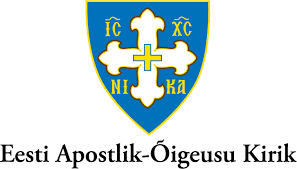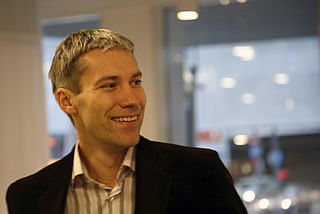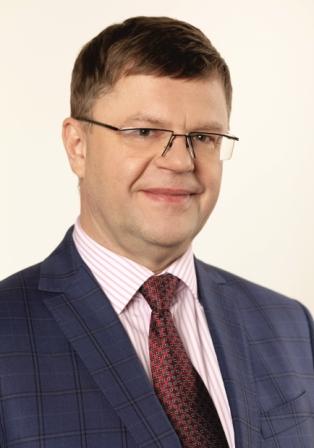
Saaremaa is the largest and most populous island in Estonia. Measuring 2,673 km2 (1,032 sq mi), its population is 31,435. The main island of the West Estonian archipelago, it is located in the Baltic Sea, south of Hiiumaa island and northwest of the Gulf of Riga. The administrative centre of the island, and of the Saare County, is the town of Kuressaare, which in January 2018 had 13,276 inhabitants.

The United Methodist Church (UMC) is a worldwide mainline Protestant denomination based in the United States, and a major part of Methodism. In the 19th century, its main predecessor, the Methodist Episcopal Church, was a leader in evangelicalism. The present denomination was founded in 1968 in Dallas, Texas, by union of the Methodist Church and the Evangelical United Brethren Church. The UMC traces its roots back to the revival movement of John and Charles Wesley in England, as well as the Great Awakening in the United States. As such, the church's theological orientation is decidedly Wesleyan. It embraces liturgical worship, holiness, and evangelical elements.

Kuressaare is a town on the island of Saaremaa in Estonia. It is the administrative centre of Saaremaa Municipality and the seat of Saare County. Kuressaare is the westernmost town in Estonia. The recorded population on 1 January 2018 was 13,276.

Ruhnu is an Estonian island in the Gulf of Riga in the Baltic Sea. Its territory of 11.9 square kilometres (4.6 sq mi) is administratively part of Saare maakond (county). Ruhnu lies geographically closer to the coast of Courland on the mainland of Latvia than it is to any point in rest of Estonia. With less than 150 official residents, the Ruhnu vald (parish) has the smallest population of Estonia's 79 municipalities. Before 1944, it was for centuries populated by ethnic Swedes and traditional Swedish law was used.

Ruhnu Parish is a municipality in Saare County, Estonia. It encompasses the island of Ruhnu in the Gulf of Riga, together with a number of uninhabited islets. Its population is the smallest of any of Estonia's 79 municipalities, the parish being exempt from the usual minimum population size of 5000. There are 60 permanent inhabitants during winter time; in summer the number increases to 150. In 2015 the parish council approved Ado Tuuga's designs for the municipality's flag and coat of arms.
A bishop is a senior role in many Methodist denominations. The bishop's role is typically called the "episcopacy", based on the Greek word episkopos (επισκοπος), which literally means overseer. Superintendent is another translation of episkopos but in Methodist churches this is a role distinct from bishop. The first Methodist bishops were appointed in America, and American Methodist denominations still recognize the office of bishop.

The Estonian Apostolic Orthodox Church is an Orthodox church in Estonia under the direct jurisdiction of the Ecumenical Patriarch of Constantinople. Under Estonian law it is the legal successor to the pre–World War II Estonian Orthodox Church, which in 1940 had over 210,000 faithful, three bishops, 156 parishes, 131 priests, 19 deacons, two monasteries, and a theological seminary; the majority of the faithful were ethnic Estonians. Its official name is the Orthodox Church of Estonia.

The Catholic Church in Estonia is the national branch of the worldwide Catholic Church, under the spiritual leadership of the Pope in Rome.
Robert Tsugio Hoshibata is a bishop of The United Methodist Church (UMC), the second-largest Protestant denomination in the United States. He was elected to the episcopacy in 2004. His first assignment was as Bishop of the Oregon-Idaho Conference of the UMC. He currently serves as Bishop of the Phoenix Episcopal Area, Desert Southwest Conference for the UMC.
Robert Eric Hayes Jr. is a member and serves as Bishop Emeritus of the Global Methodist Church. At its May 22, 2023, weekly meeting, The Global Methodist Church's Transitional Leadership Council (TLC) received the Rev. Dr. Robert Hayes Jr. as a clergy member in the new denomination and then immediately voted to confer upon him the title bishop emeritus. Hayes joins Bishop Emeritus Mike Lowry as the only other bishop granted that status.
An annual conference is a regional decision-making body within various Methodist denominations. Conferences are a key characteristic of the connexional (connectional) system of government in Methodism. Annual conferences are composed primarily of the clergy members and a lay member or members from each charge. Each conference is a geographical division. In general, the smaller states in the United States hold one conference each, while larger states often include two or more conferences. Several annual conferences are held in other nations as well.

Pöide St. Mary's Church is located on Saaremaa island, in Pöide, Saaremaa Parish, Saare County, Estonia.

The Estonian Orthodox Church of the Moscow Patriarchate is a semi-autonomous church in the canonical jurisdiction of the Patriarchate of Moscow whose primate is appointed by the Holy Synod of the latter.

The following is an alphabetical list of articles related to the Republic of Estonia.

Indrek Allmann is an Estonian architect and city planner.

Estonian Maritime Academy of Tallinn University of Technology is a vocational university in Estonia. It is one of the schools of Tallinn University of Technology and it is the only educational institution in Estonia that offers professional higher education, Master’s and Doctoral level education in the maritime field. The university is located in the capital Tallinn but also has two centres in Saaremaa. In addition to higher education, the school contributes to research, provides training and offers services. The Academy also holds a one of a kind Simulator Centre and has a whole dedicated floor of hi-tech laboratories.

Tullio Liblik is an Estonian entrepreneur, the CEO and member of the board of the investment company Saarte Investeering and the chairman of the council of Kuressaare Regional Training Centre.

Ants Kaljurand popularly known as Terrifying Ants,, was an Estonian Nazi collaborator, anti-communist, and forest brother during and after World War II.

The Tartu Credit Center Massacre was the mass murder of 19 people in the basement of the former Credit Center in Tartu on 14 January 1919.















